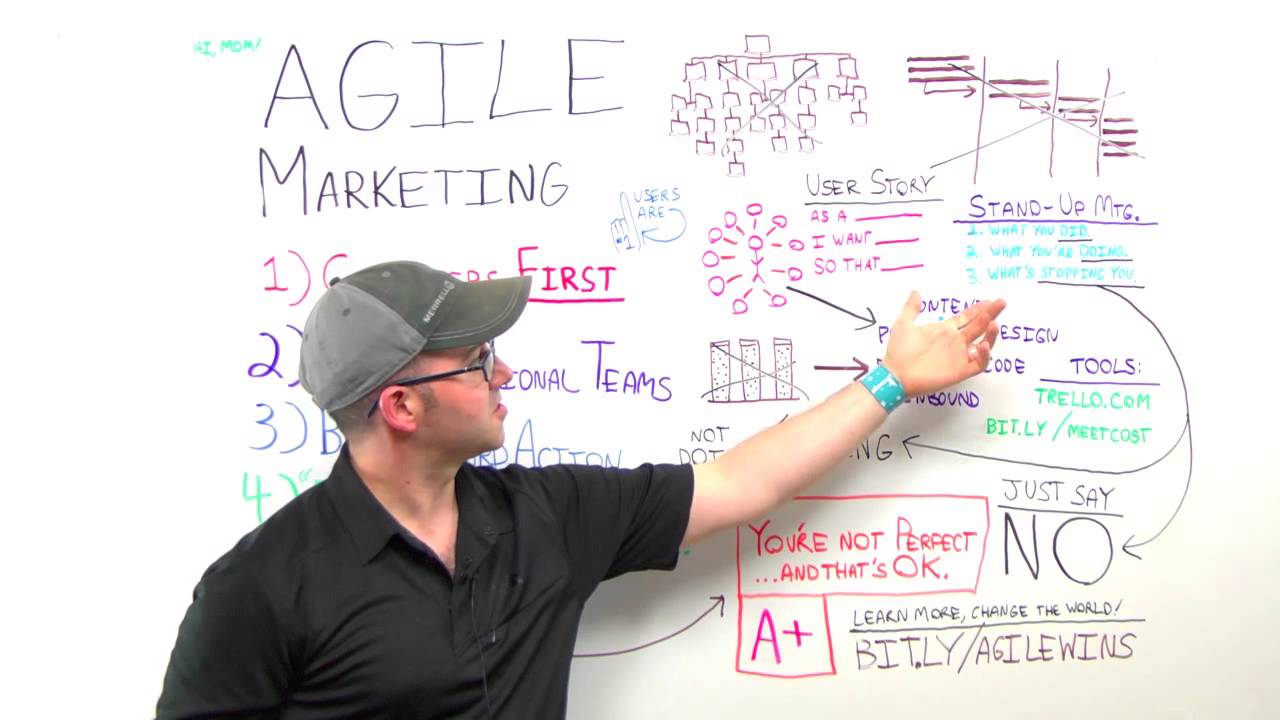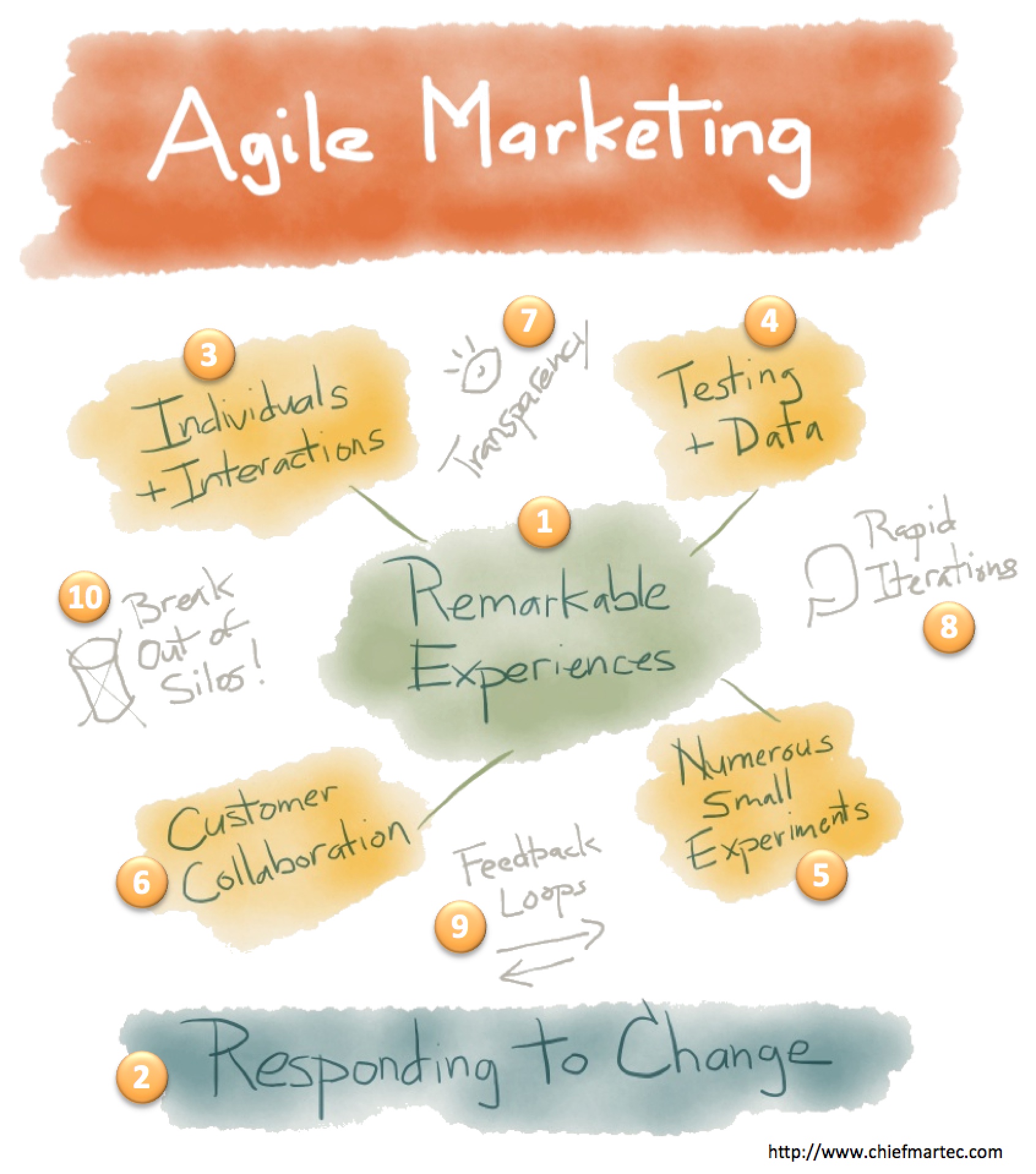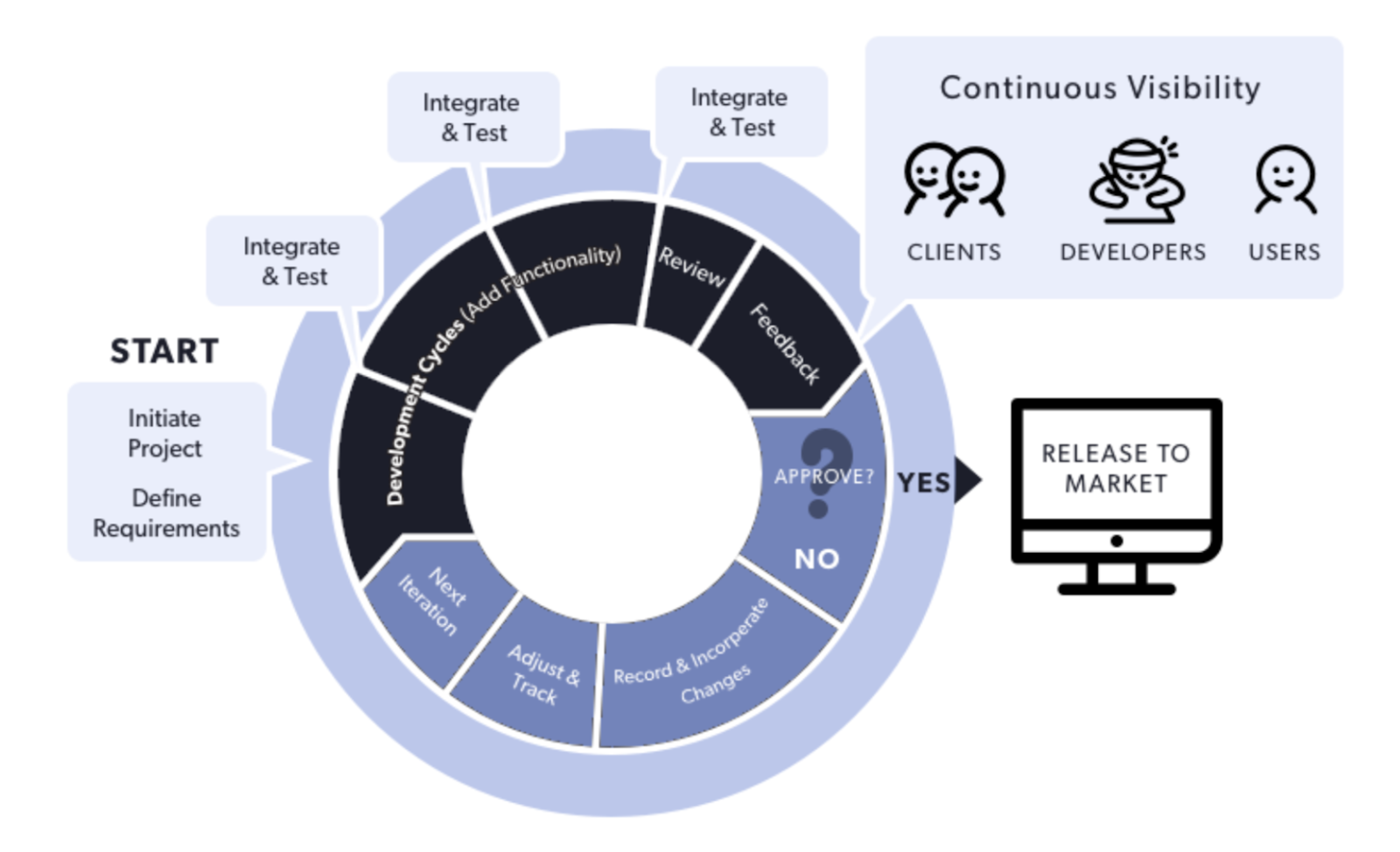Agile marketingis a tactical marketing method in which marketing teams pick high-value initiatives to spend their efforts on as a group.
Sprints (short, finite times of intense work) are used by agile marketing teams to finish projects collaboratively. They measure the impact of the projects after each sprint and then enhance the results over time in a constant and gradual manner.
Agile teams may also decide that a project was ineffective and should not be repeated, but this is still considered a win. Failure is acceptable in agile marketing as long as it is accompanied by lessons and results in future, potentially powerful efforts.

Agile Marketing - Whiteboard Friday Moz
Agile Marketing History
An intrepid group of forward thinkers gathered on June 11, 2012 to draft a document that would guide the future of modern marketing.
This two-day gathering of marketing experts, dubbed Sprint Zero, examined the developing notion of Agile marketing. Their purpose was to create a unified understanding of the movement's essential ideals and ideas, as well as to pave the way for future evangelism.
The informative Agile Marketing Manifesto, a thorough distillation of several earlier ideas that is still the gold standard for what Agile marketing really implies, was the main output of their 48-hour intensive discussions.
Sprint Zero just celebrated its fourth anniversary, so now seems like a good moment to look back at their work and the early days of the movement they started.
Sprint Zero, An Agile Marketing Initiative, Sparked A Trend
The previous Eventbrite description for Sprint Zero still exists, and it offers the following event information:
"SprintZero is a free one-day event that will bring together marketers that are passionate about Agile and want to incorporate it into their marketing operations." Our purpose is to share, communicate, and discuss the most up-to-date agile marketing best practices and operational principles. We also want to see how we can get the word out about the advantages of Agile marketing."
A group of about 20 people gathered in San Francisco for two days of Agile marketing geekery, sharing their ideas, successes, and mistakes with their peers.
The Agile Marketing Manifesto was the main paper that came out of the gathering, as previously stated. However, it spawned dozens more articles and blog entries, adding gasoline to the raging debate over climate change.
What An Agile Marketing Team Can Accomplish
Marketers can open up totally new approaches to achieve consumers and goals by adopting the methodologies developed by developers (with our own twists, of course). Marketers can use agile marketing to:Market changes must be addressed immediately. Create quick campaigns that can be tweaked and improved over time. Experiment a lot and keep the ones that work. To supplement marketing efforts, use input from other departments. Hard facts can be used to justify marketing and project decisions. To avoid a tunnel-vision approach to marketing, collaborate with team members. That concludes the top-level version of the list.
The list of Agile marketing opportunities is nearly unlimited when you start going more detailed and looking at the possibilities on a project-by-project and sprint-by-sprint basis.
Is It A Good Idea For Me To Start Using Agile Marketing?
Before you go out and spend a month's moneyon whiteboards and sticky notes, take some time to think about these big questions, because your "why" should inform your "how."
Perhaps your team members are experiencing burnout as a result of their heavy workloads. If your marketing team is suffering significant turnover or showing indications of burnout, easing the strain on them should be your top focus.
You don't want to choose a method like Scrum that requires a lot of upfront training or position adjustments because that will only add to everyone's stress.
If, on the other hand, your team is already healthy and stable, you could choose to go with the methodology that will provide you the biggest competitive edge. Scrumban could be a good place to start in this instance.
Can Agile Be Used In Marketing?
Agile marketing is a marketing strategy that incorporates agile methodology' ideas and practices. It necessitates a strategic vision as well as marketing planning for the short, medium, and long term. Agile marketing differs from traditional marketing in a number of ways, including its emphasis on frequent releases.
Why Is Agile Marketing Important?
Individuals on those teams become happier, more loyal, and more innovative. Because they have more control over their job, agile marketers are more invested in it. Agile marketing can help you transform your marketing department by making it easier to develop and sustain a marketing-magic team.
What Is Agile Marketing Scrum?
One of the most widely used Agile approaches is Scrum. It's a rapid, adaptable, and successful adaptive, iterative technique for delivering considerable value quickly and throughout a project.



